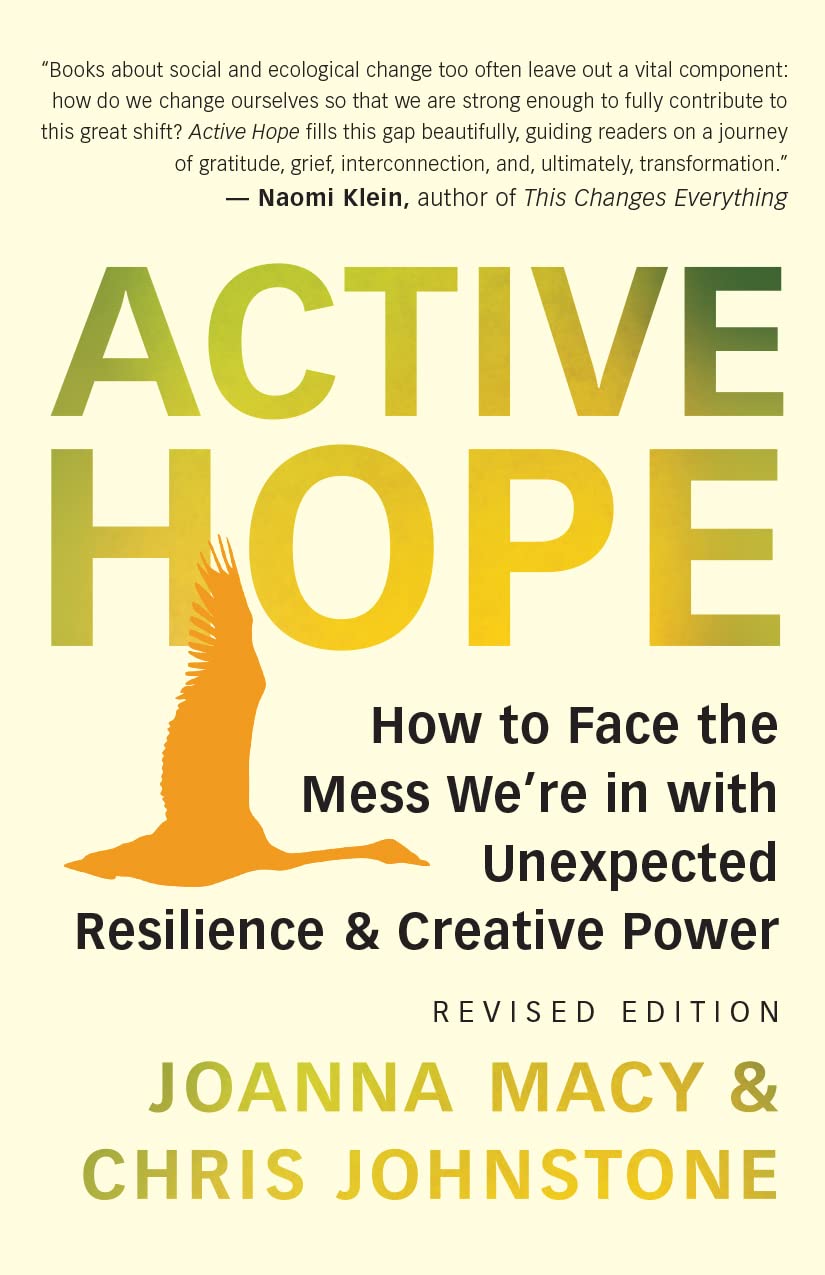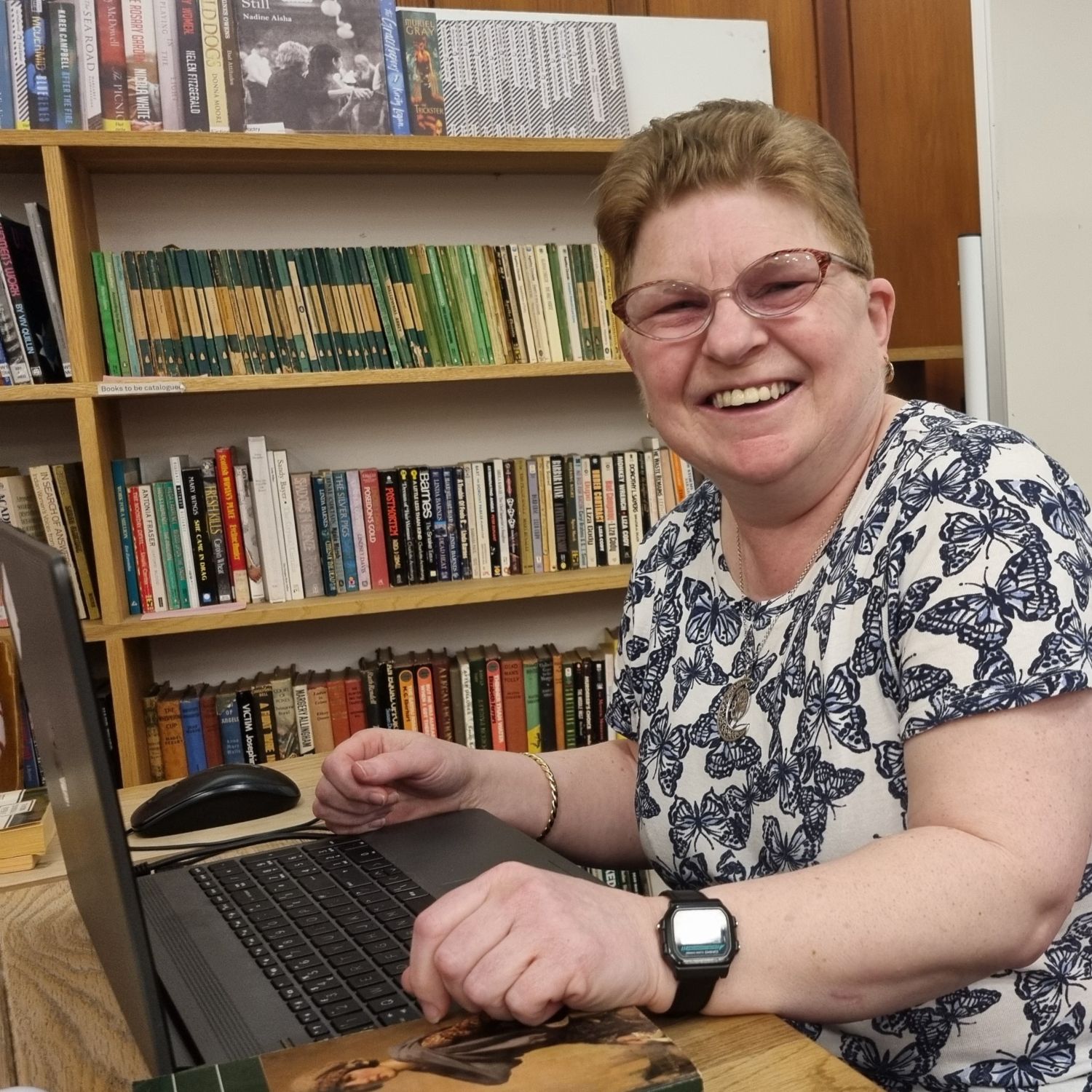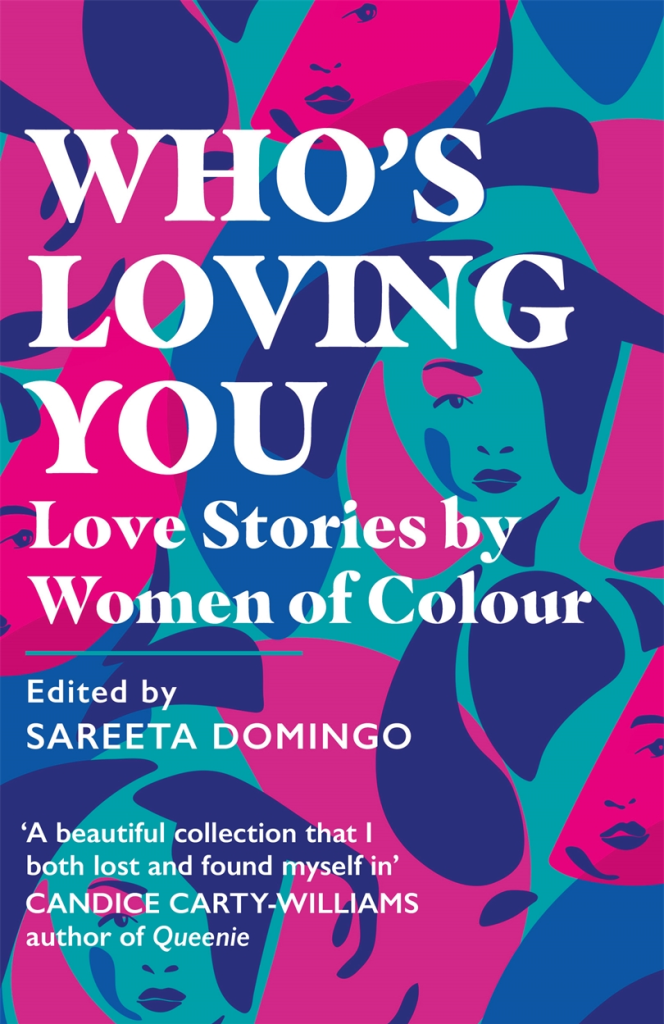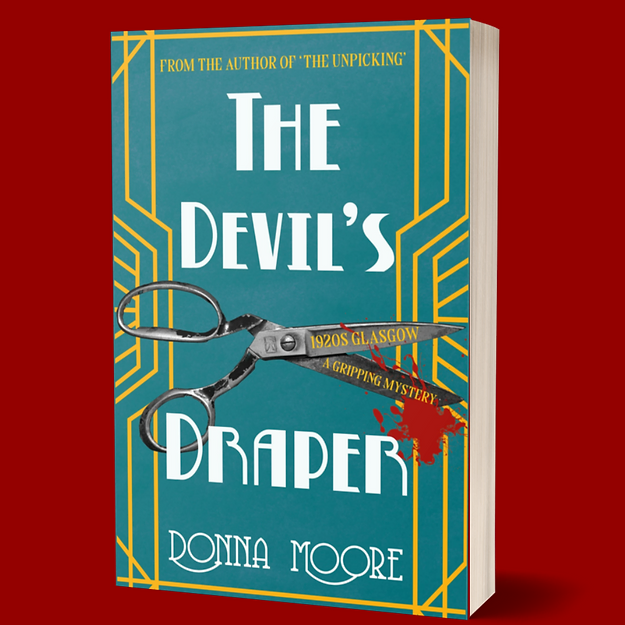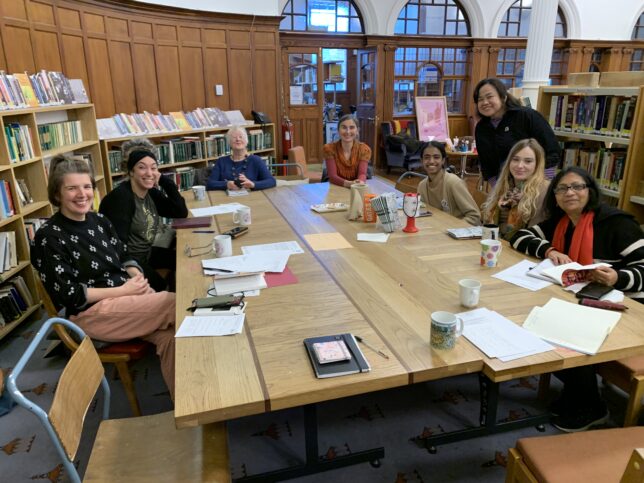This blog is written by GWL volunteer Beverly McFarlane in response to the Weemin’s Wark exhibition and collaborative project between Glasgow Women’s Library and Gaada, an artist-led organisation based in Shetland. A glossary is included at the end of this blog.
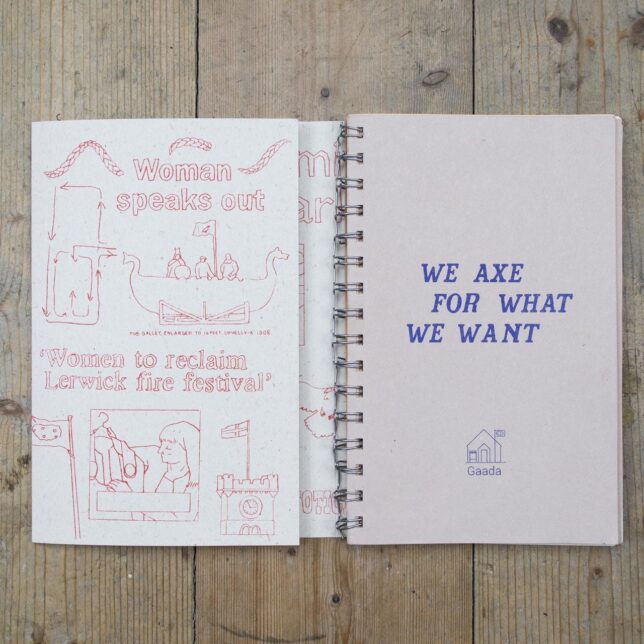
Introduction
Gaada is an artist-led initiative currently based in Burra Isle, Shetland. They work with communities in Shetland to develop meaningful and critical art activities including workshops, exhibitions, events, publishing and research. They believe access to art should be for all, and they collaborate with a wide variety of individuals and groups.
One of their current initiatives is Weemin’s Wark. The project aims to increase the visibility of women’s contribution to contemporary Shetland island culture and to provide a safe space in which to examine notions of labour for Women and allies who challenge structures of social and institutional inequality.
Early this year, an exhibition developed from ‘Weemin’s Wark’ was to take place at Glasgow Women’s library but as with all such events, it has been postponed due to the restrictions imposed upon us by Covid. The launch took place via Zoom in the week when Up Helly Aa would normally be taking place in Lerwick. It was attended by people from across the world and personally I found it the most engaging and inspiring event I had attended since the beginning of the first lockdown. Should this festival ever come to pass, I will be on the ferry to Shetland post-haste!
Context of Lukkie Minnie’s Foy
Lukkie Minnie’s Foy presented by Roseanne Watt particularly fired my imagination. Roseanne is a writer, filmmaker and musician from Shetland. Winner of several prestigious poetry prizes and joint-winner of the Highland Book Prize 2019, she is also currently poetry editor for the online literary journal The Island Review.
On being commissioned to write a piece for Weemin’s Wark, Roseanne wrote Lukkie Minnie’s Foy. She was inspired to do so by the continuing issue of the exclusion of women from active participation in the Up Helly Aa festivals, other than as costume-makers, caterers etc.
In Lerwick women and girls are not permitted to join the town’s UHA committee, be part of a Jarl Squad or Junior Jarl Squad or to take part in guizing. Only once, in South Mainland Up Helly Aa, has there been a female Jarl, Lesley Simpson in 2015. Debate on the issues of misogyny, discrimination and tradition raise hackles on all sides and unsurprisingly some of the most vehement views are expressed on social media. Women have been accused of attempting to destroy tradition and thus the festival. It was the comment “If you don’t like it, make your own festival”, that sparked Roseanne to write the piece. Although accepting that this is not a reasonable counterargument and is a wilful misunderstanding of the issues, she accepted the challenge.
In so doing, she offers an alternative view of ‘tradition’. Instead of tradition being seen as something carved in stone and bound to be repeated ad infinitum despite present day values, (the favoured view of many of those against women being allowed to participate in UHA, despite the festival being only 150 years old), why not view tradition as a story from the past that we choose to tell in the present because its message matters enough to be worth hearing? In choosing what story that might be, she immediately thought of the Shetland Witch trials of the 1600s.
In Scalloway, there stands a hill from where you can see the whole island. Known as Gallow Hill, it is where supposed witches and warlocks were strangled and burned. The last to be executed were a mother and daughter, Barbara Tulloch and Ellen King in 1712. When the site was cleared the next day, two silver crosses were found among the ashes. The community took this as a sign from God that the women’s souls were pure and that they were innocent all along. No signs point the way to Gallow Hill and no memorial marks the site despite the stories being common knowledge. Little mention is made in the Scalloway museum, other than as folklore. No reference is made in human terms. If these women and men had been remembered, what might that have led to? Bearing that in mind, Roseanne set out to write a piece rooted in older true Shetland traditions that would also mirror Up Helly Aa.
The imagined Lukkie Minnie’s Foy is based on the old midsummer tradition of Johnsmas Foy celebrated on 24 June. On that day the folk gave thanks for ‘small as well as great mercies’. Fragments of bone, fish, animals, peat, plants and wool would be offered and set fire to with fish oil. If the blaze burned out without being replenished good fortune would prevail.
While Up Helly Aa is a winter festival where the fire destroys darkness, Lukkie Minnie’s Foy would be a midsummer festival where fire has the potential to nourish us as we face darkness, as well as to cast light upon it. The values of the festival would be to return us to our relationship with the land, and to promote grace and hospitality towards strangers ‘imbu da fremd’ – give strangers the best available. To invite a stranger into our home is to practice radical compassion, but today fear prevents us from doing this. With this in mind, Roseanne decided to give the Lukkie a fearful edge, while the community collectively welcomes her nevertheless.
The female coding of the Lukkie is meant to parallel the Guizer Jarl, but unlike Guizer Jarl, the Lukkie can be played by anyone.
The Piece
The colour and texture of the piece is brought to life by the liberal amount of Shetland vocabulary and read in the warm Shetland accent, it is easy to visualise the scene and even easier to wish that you were there.
The fire is set but unlit. In it among the peats there is a sheep’s skull, wildflowers and an iridescent Corbie feather. There is a scent of wood, earth, salt and an animal tang that ‘cuts through the air like claws’. From Gallowhill you can see the whole island. People on the waterfront are eating the traditional mid-summer dish of sweet mill gruel. The tents in Fraser Park are host to music, poetry and art workshops.
The Lukkie lights the fire and each person has an offering of thanksgiving for small or great mercies. In Scalloway Castle there is a display of masks worn by previous Lukkies. Each year the Lukkie chooses an animal motif for the mask and also the pattern for their hap. The hap always incorporates plant patterns.
We can eavesdrop on a guide at the castle talking about the witches but we know that these women were not witches. Were they on trial for being too old or too disabled? Were they too dependent on others or not dependent enough? Perhaps they had too much knowledge or were too skilled. Perhaps they were outside the norms of sexuality or gender. Perhaps they owned their own land. We will never know.
Their story is part of a tragedy. 40-100 thousand people throughout Europe were put to death as witches. It tore communities apart and it is well to remember that Shetland played a part in the darkness.
We now move on to the main event.
The people clutch ‘Lukkie Lanterns’ – they look like scrolls of Birch bark washed up on the shore. On them they write things for which they are thankful.
The Lukkie leads the procession from Scalloway Castle to Gallowhill leading a long line of torch bearers and buggie shakkers. It is an honour to march in the Lukkie’s procession. Guizers are invited to dress in the costume of the Lukkie’s chosen animal. The rest of the group is composed of locals who work in charities or who assist others in some way.
The procession makes its way in the diaphanous light of the Simmer Dim. It feel as though the entire island has slipped out of time and the light is strange. A hush falls over the crowd. There is a sound of looderhorns and the door of the castle opens. The Lukkie holds a torch of vivid green flames high above her head. She wears a kishie anchored with rope on her shoulders.
The Guizers line up behind her singing the songs of the Foy. Their torches are not yet lit. Finally we see the Lukkie’s costume up close. This year she has chosen the Corbie as her animal. The raven’s head crowns the Lukkie’s head with iridescent feathers framing her face. Only when she draws level do you notice that her eye has been blanked out by a milk white pebble. The Guizers hold out their bags and the crowds toss their Lukkie Lanterns into them. They will be added to the Lukkie’s kishie at the top of the hill.
The Lukkie and her procession break away from everyone else and make their way to the top of the hill. Everyone else waits below.
A hush settles over the town. The beacon is lit and there is the sound of looder horns. The crowds cheer as pinpoints of light spread across the hill as participants pass the light. Finally, it reaches the public and they march off, sungaets, to Fraser Park.
The Guizers toss down their flaming torches to make a new fire in the heart of town. Everyone else crowds into the festival tent to celebrate but the Lukkie does not return from Gallowhill. She quietly takes off her animal costume and returns to being herself. She then slips unannounced, back into the festive flow of light. The spirit of the Lukkie has returned to the hill where it will reside for the rest of the year amid the deepening darkness.
As the crowd disperses, you linger longer and think it a kind of alchemy. To light the hill on Gallowhill each year is to bring a kinder power from the flames. It is to say “Never again”. Never again will we find crosses in the ash. May these flames always light the hame trail path. The alchemy is in the choice of telling it this way. It is halfway through the year. You are standing here at the tipping point of the light.
Glossary
Buggie-shakker – bag shaker. The bag was originally sheepskin with the wool removed.
Corbie – Raven
Foy – Originally a feast held by a boat crew at the end of the fishing, later it became a party to celebrate a special occasion.
Guizer – A person in disguise taking part in a festival.
Guizer Jarl – The principal Guizer in Up Helly Aa.
Hap – hand knitted shawl.
Johnsmas Foy – a celebration on 24 June before the herring season began. The name refers to St John and Dutch fishermen often celebrated it in Bressay Sound.
Kishie – straw basket or creel
Looder horn – a bullock’s horn that was blown to warn other boats in foggy weather
Simmer Dim – the twilight in midsummer when it never gets truly dark.
Sungaets – in the direction of the sun, from left to right, clockwise.
References
Gaada: https://www.gaada.org/
Graham, John J: The Shetland Dictionary online version Shetland for Wirds: www.shetlanddialect.org.uk
Johnson, Karl & Up Helly Aa For Aa: Fuel for the Fire: tradition and the gender controversy in Lerwick’s Up Helly Aa eresearch.qmu.ac.uk
Watt, Roseanne: www.roseannewatt.com
Watt, Roseanne : Personal notes

